Is your kitchen making you sick? How to prevent food poisoning
Avoid a cooking disaster, or a trip to the ER, with these food-safety tips.
Updated on February 17, 2023

Each year in the United States, there are about 48 million cases of foodborne illness, according to the U.S. Food and Drug Administration (FDA). Although companies may make headlines when they recall a food due to contamination, the truth is, food poisoning isn’t always the result of bad practices in restaurants or food processing facilities.
Since food can become contaminated at any stage of production, from harvesting to storing to cooking, nowhere is 100 percent safe—and it can even happen in your own kitchen.
Read on for tips to keep your home free from food poisoning.
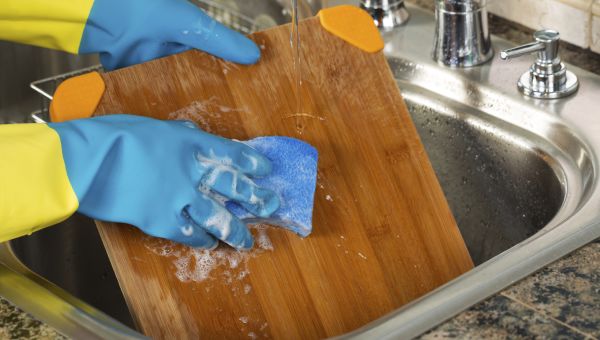
Keep it clean
The best way to keep your kitchen free from foodborne illness is to keep it clean. Wash your hands before and after handling food. Also sanitize countertops and cooking surfaces with a clean sponge or dishrag before and after cooking, says Kelly Snow, a registered dietitian in South Carolina.
“People continually use the same sponge to clean their dishes, and that sponge harbors a lot of bacteria that can be spread [throughout your kitchen],” adds Snow.
Don’t forget to clean and sanitize cutting boards with hot, soapy water, baking soda, or a bleach solution, either. And if your cutting board has too many knife scars on it, go ahead and toss it, she says; bacteria love hiding out in those tiny crevices.

Be a smart shopper
What you buy and how you shop are also important tools in preventing germs from coming home with you.
The FDA recommends keeping raw meats and seafood away from other foods in your cart as you shop, and bagging them separately at checkout. Also keep an eye out for dents, bulges, and cracks in canned foods or food packaged in glass jars. This could be a sign that the food has been under-processed or contaminated.
If you buy frozen foods or perishables, purchase them last to prevent spoiling, and make sure you put away all perishable items within two hours of getting home. If the temperature is above 90°F, do it within one hour.
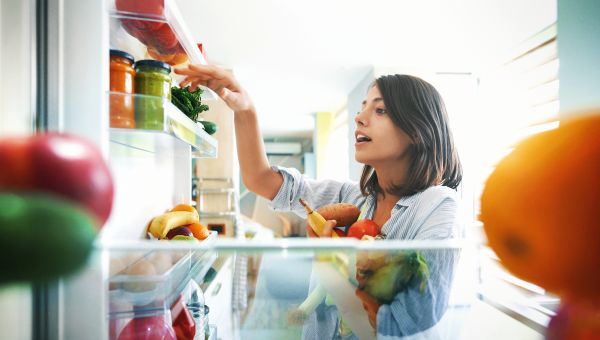
Store food properly
If you’re storing meats, poultry, or seafood in the fridge to use right away, keep them on the bottom to prevent the liquid from leaking onto other food, says Snow. The FDA also recommends keeping all animal products separated from other foods in the fridge.
If you plan on freezing meat, adds Snow, do so by the use-by date. You can store frozen, uncooked ground beef for three to four months, uncooked poultry parts for nine months and uncooked steak or chops for four to 12 months.
Also, keep eggs, dairy, produce and ready-to-eat foods such as lunch meats stored in a refrigerator set at 40°F or less. Store fruits and veggies separate from each other, as some fruits can emit ethylene, a ripening agent that can spoil surrounding vegetables.
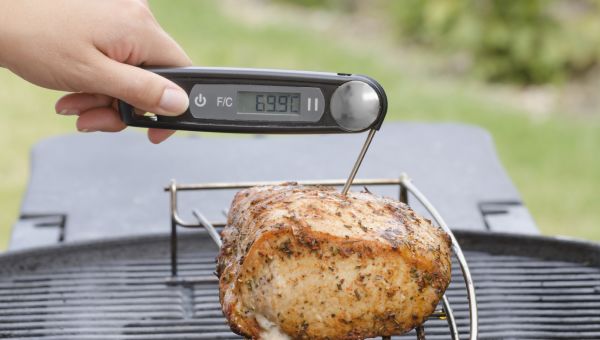
Be mindful of cooking temperatures
Cooking foods to the right temperature can also help kill dangerous pathogens. It’s important to note that some meats—specifically steaks, roasts, chops, and raw ham—need a three-minute rest period after being cooked. This helps the centermost parts become fully cooked.
Here are the target internal temperatures for different types of food, plus some telltale indications foods are fully cooked:
- Ground beef and pork: 160°F
- Ground or whole chicken and turkey: 165°F
- Beef, pork, or lamb steaks, roasts, and chops: 145°F
- Precooked ham: 165°F
- Fish: 145°F, or until skin is pearly and opaque and flesh flakes easily
- Shrimp, lobster, crab, and scallops: 145°F, or until pearly and opaque
- Clams, oysters, and mussels: Cook until shells open
- Eggs: Cook until whites and yolks are firm
- Leftovers and casseroles: 165°F
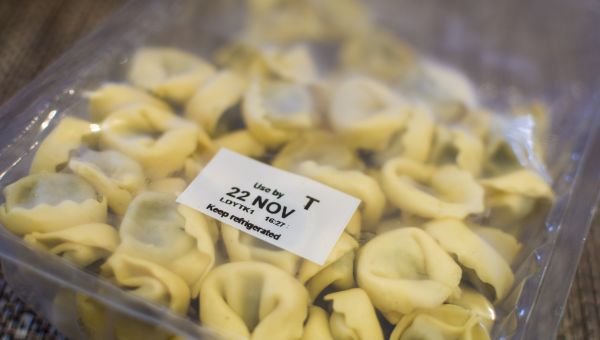
Save the dates—and check them
It can be tough knowing whether the food in your house is still safe to eat, but packaging dates are a good place to start. Although these dates don’t necessarily indicate the safety of a food (except for infant formula), it’s best not to purchase foods that have been sitting on the shelf past the expiration date.
Stick to these tips when you get your groceries home:
- Use eggs within three weeks of purchase.
- If you’re not freezing them, use fresh fish and ground meats within two days, and steaks or chops within three to five days.
- Follow expiration dates on dairy.
Always heed your senses. If something doesn’t look or smell right, it’s better to be safe than sorry. Compost the food when appropriate, or throw it in the trash.
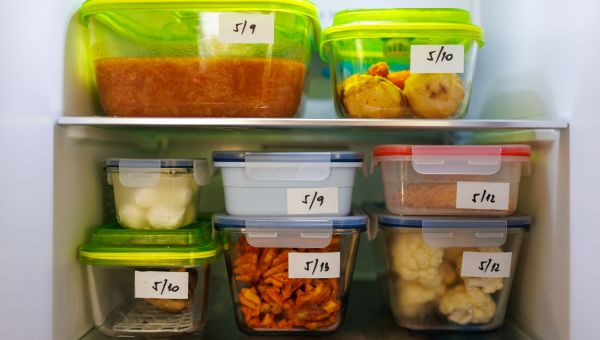
Be leery of leftovers
Storing leftovers is a great budget-saver, but you have to be careful about how long you let things sit in the fridge.
“No more than four days for leftovers,” says Snow. “And dating them is always a good idea, whether it’s the date you put them in the refrigerator or the day it was cooked.”
Also be on the lookout for anything that appears spoiled. If your leftovers are growing mold, it’s definitely time to toss them out.
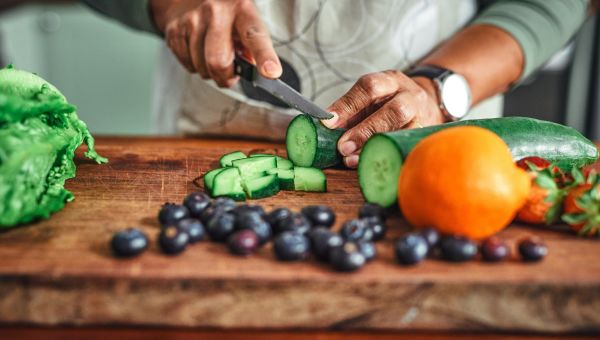
More safety tips
Here are additional strategies to help prevent food poisoning:
- Never prepare raw meats and poultry on the same surface as fruits, veggies, or other fresh foods. They should be cooked, stored, and prepared separately to prevent cross-contamination of bacteria and germs, says Snow.
- The longer foods stay at room temperature, the more likely they are to begin growing bacteria. The quicker you cool and refrigerate, the better. Hot foods can be safely put in the fridge and won’t harm your refrigerator. It helps to divide large pots of food into individual shallow containers so that they cool more quickly.
- The Centers for Disease Control and Prevention (CDC) estimates that around 46 percent of food poisoning comes from produce. Always wash your fruits and veggies before using.
- Make sure your fridge isn’t packed to the brim. To keep the food safe, cold air has to be able to circulate inside.

U.S. Food & Drug Administration. What You Need to Know about Foodborne Illnesses. Page last reviewed February 17, 2022.
U.S. Food & Drug Administration. Foodborne Pathogens. Page last reviewed March 5, 2020.
Mayo Clinic. Food Poisoning. December 30, 2022.
Centers for Disease Control and Prevention. Four Steps to Food Safety: Clean, Separate, Cook, Chill. Page last reviewed August 5, 2022.
Wolde T, Bacha K. Microbiological Safety of Kitchen Sponges Used in Food Establishments. Int J Food Sci. 2016;2016:1659784.
U.S. Department of Agriculture – Food Safety and Inspection Service. Cutting Boards. Page last updated August 2, 2017.
U.S. Food & Drug Administration. Safe Food Handling. Page last reviewed February 17, 2022.
U.S. Department of Agriculture – Food Safety and Inspection Service. Shelf-Stable Food Safety. Page last updated March 24, 2015.
U.S. Department of Health & Human Services. Cold Food Storage Chart. Page last reviewed September 20, 2021.
Centers for Disease Control and Prevention. Fruits and Vegetables: Keep Them Fresh to Keep You Healthy. Page last reviewed June 20, 2022.
U.S. Department of Health & Human Services. Safe Minimum Internal Temperature Chart for Cooking. Page last reviewed December 16, 2022.
U.S. Department of Agriculture – Food Safety and Inspection Service. Food Product Dating. Page last updated October 2, 2019.
U.S. Food & Drug Administration. What You Need to Know about Egg Safety. Page last reviewed May 10, 2022.
Zeratsky, Katherine. How long can you safely keep leftovers in the refrigerator? Mayo Clinic. October 4, 2022.
U.S. Food & Drug Administration. Tips to Chill Food – Food Safety for Moms to Be. Page last reviewed September 27, 2018.
Centers for Disease Control and Prevention. Attribution of Foodborne Illness: Findings. Page last reviewed November 5, 2018.
More On


video

article
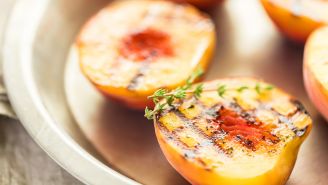
slideshow


video


video
